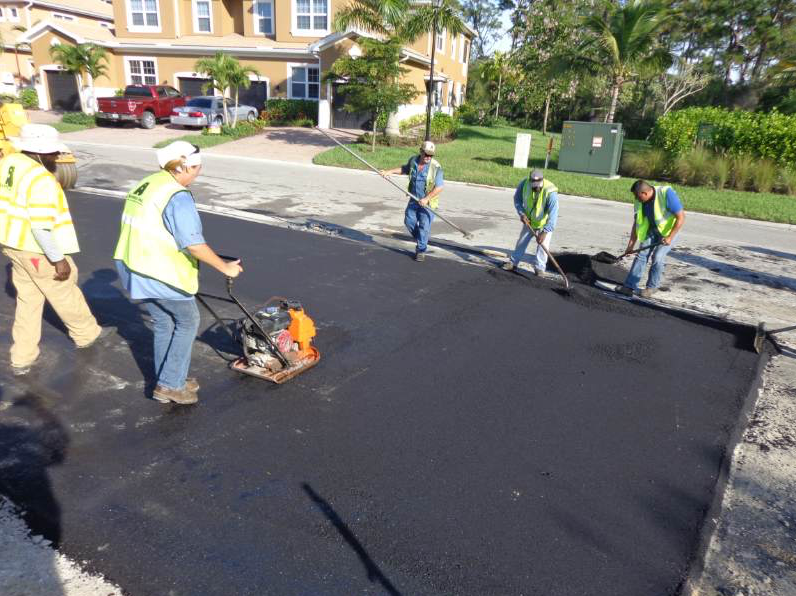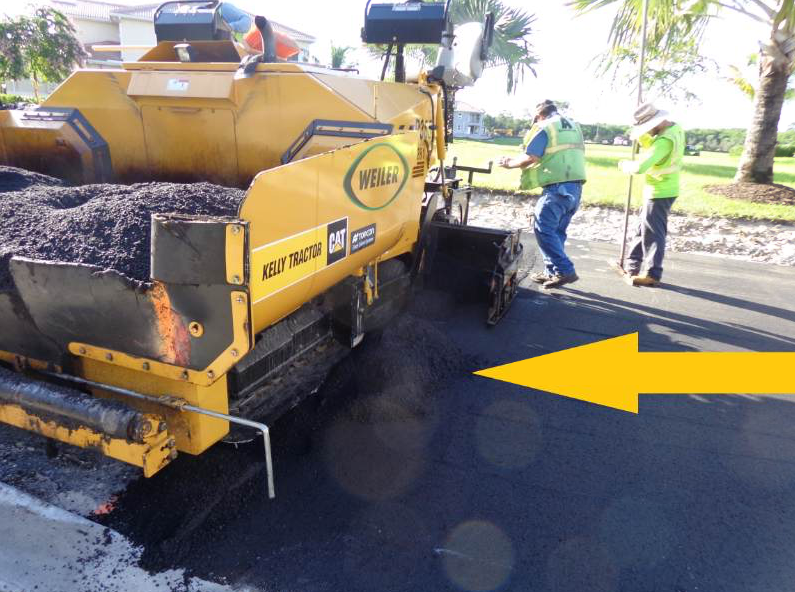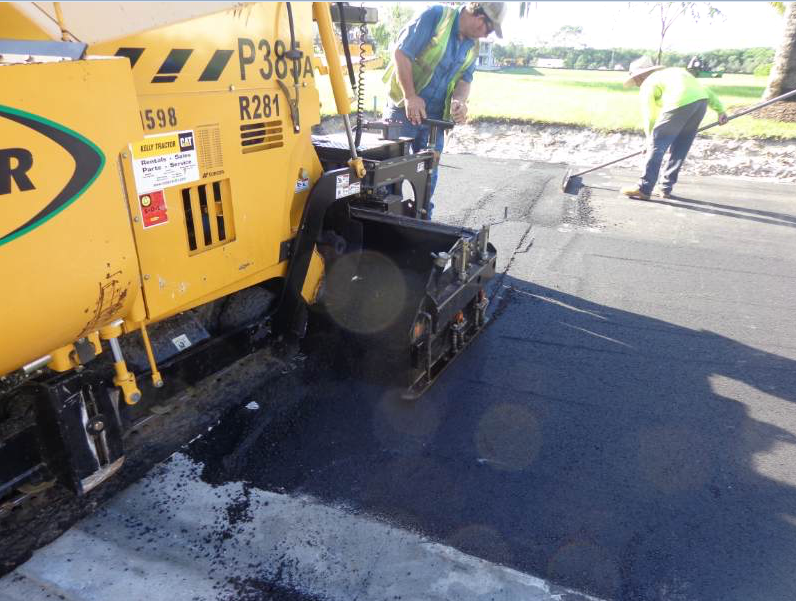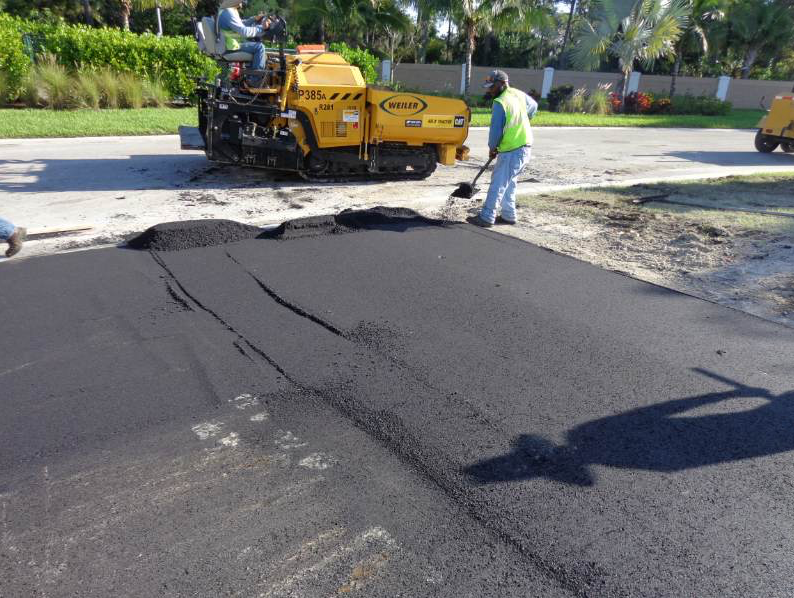Match Up Smartly
BY John Ball

How much material you place on a commercial job usually depends on what the owner can afford for the project. That means you may be limited to one lift to get a new surface right.
As always, make sure you follow your best practices and line out the project before you start. Then we can talk about one specific good idea that can help you construct the joints smoothly.
When the paver gets to the end of the first pull, the operator can lift the screed and let the augers run out a little bit of mix in a pile at the transverse joint. You want this for two important reasons. First, this material is hot and it will help hold the heat of the mat right there at the joint. Second, the extra bit of material here allows you to stretch your extensions when making the last pass out of the parking lot.
When the paver gets to the end of the second pull, the operator can run out a little bit of mix again.

In this image, you can see the material pile at the end of the first pull.
Keep in mind, you want each pile to be small—about half a wheel barrow full in measure. If the pile is too big, as indicated in the pictures here, you’ll cause the extension to rise as you pave over the area. That will create a dip in the mat at the joint where water can collect when it rains.
The Southwest Florida crew working in these pictures did a great job on the parking lot project they were assigned to. The one mistake that morning of getting too much material in the pile on the transverse joint gave us a teaching opportunity, and it was easy to fix. Here’s how to fix the problem if your crew gets overzealous with the pile at the end of the pass.
First, you can get the laborer in there to shovel some of the material into a wheel barrow or into the skid steer bucket. This gets it out of the way and resolves the problem.

In this image, you can see the extension going over the pile, and you can tell it’s straining. You want to stretch the extensions a bit and give them some extra material to fill the joint very well, but this image shows what a larger pile can do to the screed and extension.
If the crew doesn’t notice the pile’s largess before paving over it and the dip in the mat appears, get the shovels out and throw some material directly on the area ASAP. It’s important to get at the problem quickly because the single lift will cool quickly. Let the lute artist work the material in, getting the larger stone and fines to mash in together, and let the roller operator smooth it in place with the plate compactor.
The pile you auger onto the end of the pull does not need to be big to be effective. Keep it small and simple, but don’t worry too much if you drop too much material. It’s easy—and important—to fix to get a top quality pavement.

When a flat plate tilts to rise up over a pile of mix, part of the plate will gouge the mat while part of the plate will be overfed. This results in a dip in the mat that the crew will need to correct ASAP.
John Ball is the proprietor of Top Quality Paving and Training, Manchester, New Hampshire. He provides personal, on-site paving consulting services around the United States and into Canada. For more information, contact him at (603) 493-1458 or tqpaving@yahoo.com.
